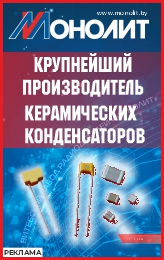Broadband wire grid polarizer (WGP) products suitable for mid- and long-wavelength infrared spectroscopy that require high contrast image acquisition are considered.
Introduction
Polarizers are used in IR spectroscopy for characterization of dielectric and metallic coatings, analysis of birefringent materials, and for indexing the vibrational modes in crystals and textured films. A real polarizer has a finite contrast ratio, thus some light with the unwanted polarization state is transmitted, which can impact measurement accuracy. The wire grid polarizer (WGP) is often preferred for IR applications, and consists of an array of metallic lines with sub-wavelength pitch, often supported by a transparent substrate. Benefits of the WGP over competing designs include a compact form factor with improved passing state transmittance, minimal performance variation with angle of incidence or wavelength, and improved stability in high temperature and high brightness environments. Unfortunately, WGP products designed for MWIR and LWIR applications have historically suffered from low contrast between transmission of linearly polarized light oriented in the passing and blocking states, which is mostly due to their relatively large wire grid pitch (typically ≥ 370 nm). By dramatically reducing the pitch from that found in typical IR WGP products to 144 nm, Moxtek has developed MWIR and LWIR polarizers with greatly improved contrast.
Experimental Conditions
Transmission experiments were performed using both Nexus 870 and CARY 670 FTIR spectrometers. Rotation of the WGP sample with respect to a fixed pre-analyzer allowed for transmittance measurements in the passing and blocking states. The pre-analyzers consisted of two aligned Moxtek WGP’s (both either MWIR or LWIR) separated by a gap of more than 100 microns. Open and blocked beam configurations and a silicon reference standard were used to validate instrument accuracy for transmission measurements.
Results
Moxtek’s MWIR polarizer typically transmits better than 95% of the passing state between 3.5 and 5.5 microns while maintaining a contrast ratio of better than 35dB from 3.0-5.5 microns. The Moxtek LWIR polarizer typically transmits better than 68% of the passing polarization state between 7 and 15 microns and has a contrast ratio exceeding 38.5dB. Table 1 compares the performance of the 144 nm pitch Moxtek products to a 250 nm pitch WGP from another supplier and clearly demonstrates the dramatic improvement in contrast ratio.
Conclusions
Wire grid polarizers have many advantages over other designs when used as analyzers in infrared spectroscopic applications, but have historically suffered from poor contrast between transmittance in the passing and blocking states. To address these limitations Moxtek has extended its aluminum Nanowire® patterning capabilities to AR-coated silicon substrates designed for the mid- and long-wavelength infrared. These new product offerings offer extraordinary improvements in contrast while maintaining excellent efficiency in passing state transmittance. ▪
Polarizers are used in IR spectroscopy for characterization of dielectric and metallic coatings, analysis of birefringent materials, and for indexing the vibrational modes in crystals and textured films. A real polarizer has a finite contrast ratio, thus some light with the unwanted polarization state is transmitted, which can impact measurement accuracy. The wire grid polarizer (WGP) is often preferred for IR applications, and consists of an array of metallic lines with sub-wavelength pitch, often supported by a transparent substrate. Benefits of the WGP over competing designs include a compact form factor with improved passing state transmittance, minimal performance variation with angle of incidence or wavelength, and improved stability in high temperature and high brightness environments. Unfortunately, WGP products designed for MWIR and LWIR applications have historically suffered from low contrast between transmission of linearly polarized light oriented in the passing and blocking states, which is mostly due to their relatively large wire grid pitch (typically ≥ 370 nm). By dramatically reducing the pitch from that found in typical IR WGP products to 144 nm, Moxtek has developed MWIR and LWIR polarizers with greatly improved contrast.
Experimental Conditions
Transmission experiments were performed using both Nexus 870 and CARY 670 FTIR spectrometers. Rotation of the WGP sample with respect to a fixed pre-analyzer allowed for transmittance measurements in the passing and blocking states. The pre-analyzers consisted of two aligned Moxtek WGP’s (both either MWIR or LWIR) separated by a gap of more than 100 microns. Open and blocked beam configurations and a silicon reference standard were used to validate instrument accuracy for transmission measurements.
Results
Moxtek’s MWIR polarizer typically transmits better than 95% of the passing state between 3.5 and 5.5 microns while maintaining a contrast ratio of better than 35dB from 3.0-5.5 microns. The Moxtek LWIR polarizer typically transmits better than 68% of the passing polarization state between 7 and 15 microns and has a contrast ratio exceeding 38.5dB. Table 1 compares the performance of the 144 nm pitch Moxtek products to a 250 nm pitch WGP from another supplier and clearly demonstrates the dramatic improvement in contrast ratio.
Conclusions
Wire grid polarizers have many advantages over other designs when used as analyzers in infrared spectroscopic applications, but have historically suffered from poor contrast between transmittance in the passing and blocking states. To address these limitations Moxtek has extended its aluminum Nanowire® patterning capabilities to AR-coated silicon substrates designed for the mid- and long-wavelength infrared. These new product offerings offer extraordinary improvements in contrast while maintaining excellent efficiency in passing state transmittance. ▪
Readers feedback

 rus
rus TS_pub
TS_pub technospheramag
technospheramag technospheramag
technospheramag ТЕХНОСФЕРА_РИЦ
ТЕХНОСФЕРА_РИЦ


